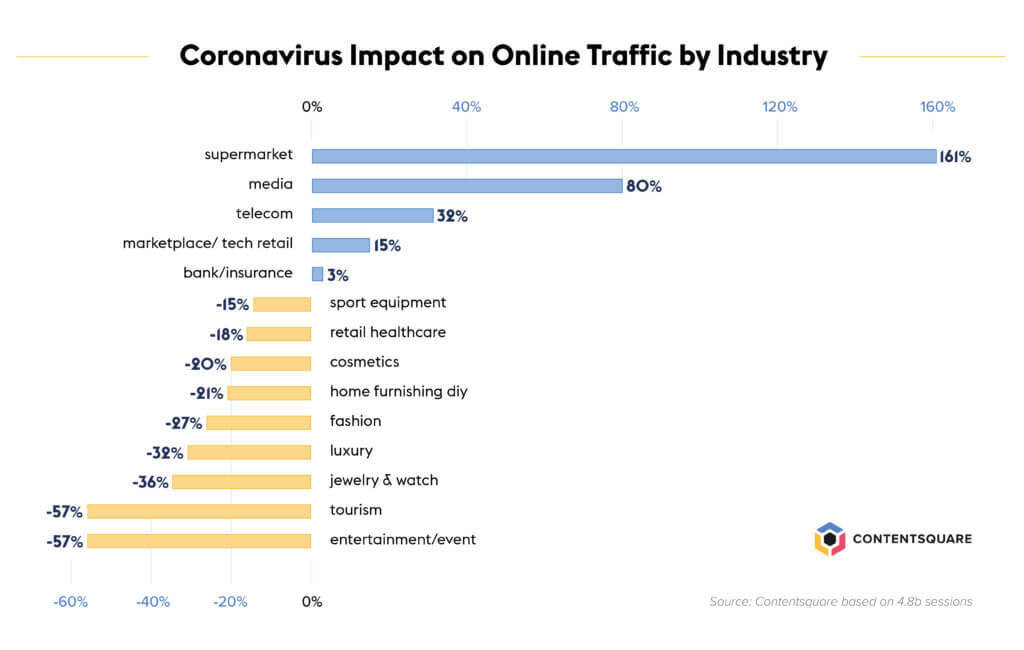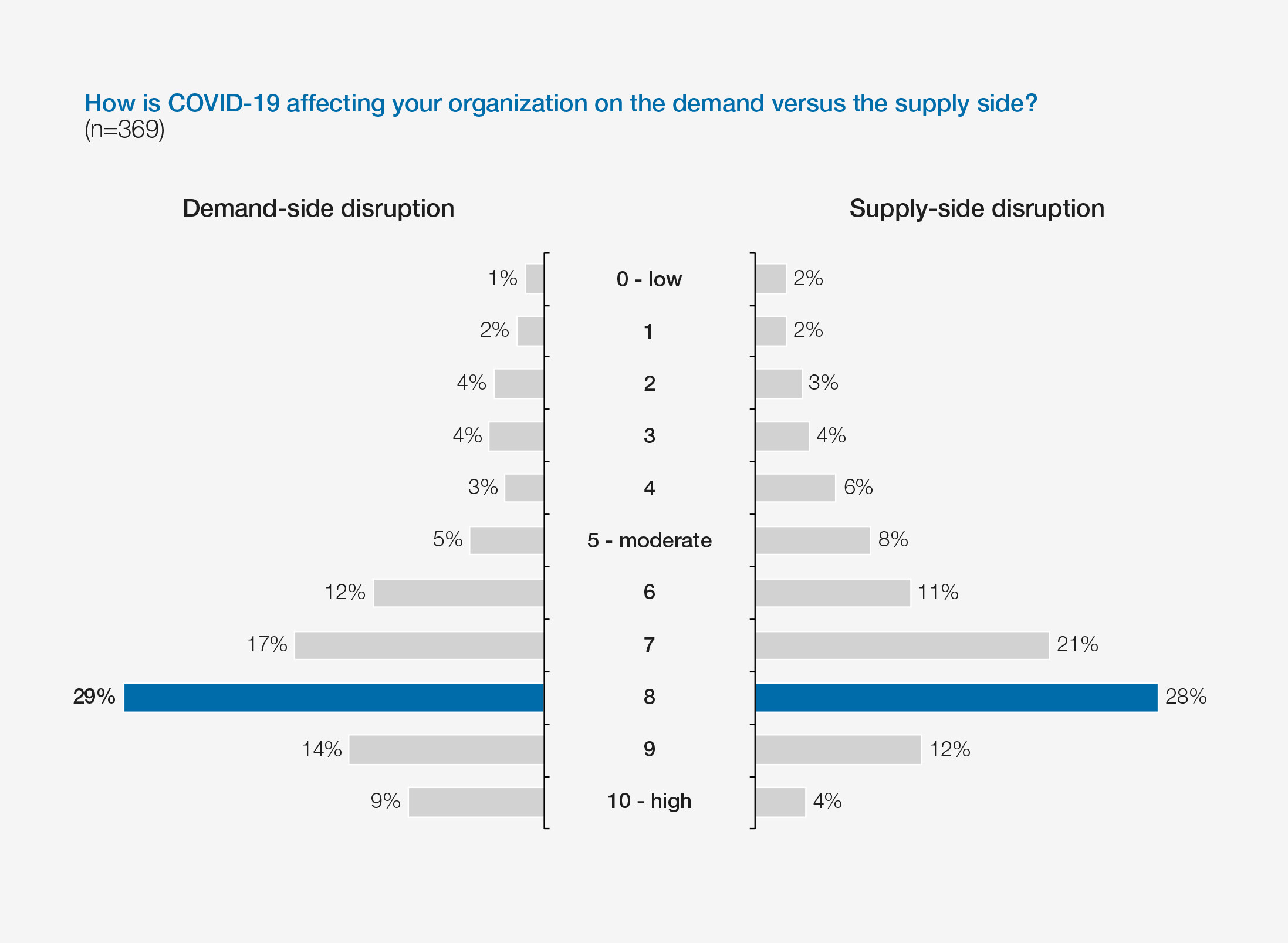- Around the world, tech start-ups are putting leading-edge innovations at the service of frontline workers.
- Many use artificial intelligence and cloud computing to help organizations process data, giving new insights to help fight the virus.
- Some companies have made their software available for free to those who need it most.
Behind the achievements of those working on the COVID-19 front line there are many organizations and entrepreneurs doing what they can to help.
Across the globe, these companies are using everything from software and robotics to good old-fashioned cooperation to fight against the disease.
From artificial intelligence in South Korea to fresh food deliveries in Africa, here are some of the bright ideas that are being deployed by the World Economic Forum’s 2020 intake of Technology Pioneers.
This Brazilian logistics technology company has set up a $5.6m fund to support the transport of essential goods, like food, medicines and essential hygiene products, in the country during the pandemic.
The scheme works by paying the wages of carriers and drivers – keeping the market going at a time when the country is being hit hard by the virus. The system pays mostly upfront: 70% of the money when the goods are loaded and the remaining 30% on delivery.
The software therefore helps spread the cost in a way that supports workers when cash flow is tight.

As online grocery sales have soared during the COVID-19 pandemic, retailers are turning to robots for help.
Image: Contentsquare
Grocery stores have seen a spike in online sales during the pandemic, and many have ramped up digital ordering and delivery services to cope. But fulfilling online orders can be tricky when staffing is tight and store aisles are congested.
Responding to the COVID-19 pandemic requires global cooperation among governments, international organizations and the business community, which is at the centre of the World Economic Forum’s mission as the International Organization for Public-Private Cooperation.
Since its launch on 11 March, the Forum’s COVID Action Platform has brought together 1,667 stakeholders from 1,106 businesses and organizations to mitigate the risk and impact of the unprecedented global health emergency that is COVID-19.
The platform is created with the support of the World Health Organization and is open to all businesses and industry groups, as well as other stakeholders, aiming to integrate and inform joint action.
As an organization, the Forum has a track record of supporting efforts to contain epidemics. In 2017, at our Annual Meeting, the Coalition for Epidemic Preparedness Innovations (CEPI) was launched – bringing together experts from government, business, health, academia and civil society to accelerate the development of vaccines. CEPI is currently supporting the race to develop a vaccine against this strand of the coronavirus.
Enter US-based retail technology firm Takeoff Technologies and its “micro-fulfillment centres”. It creates mini warehouses at the back of grocery stores which use robots to prepare customers’ orders. This helps with social distancing and allows local businesses without existing automated warehouses to compete in online food – a trend that is expected to be accelerated by COVID-19.
During the pandemic people around the world have been self-isolating. Staying at home, they have depended on others for food and other essentials. But how to pay them?
The first global pandemic in more than 100 years, COVID-19 has spread throughout the world at an unprecedented speed. At the time of writing, 4.5 million cases have been confirmed and more than 300,000 people have died due to the virus.
As countries seek to recover, some of the more long-term economic, business, environmental, societal and technological challenges and opportunities are just beginning to become visible.
To help all stakeholders – communities, governments, businesses and individuals understand the emerging risks and follow-on effects generated by the impact of the coronavirus pandemic, the World Economic Forum, in collaboration with Marsh and McLennan and Zurich Insurance Group, has launched its COVID-19 Risks Outlook: A Preliminary Mapping and its Implications – a companion for decision-makers, building on the Forum’s annual Global Risks Report.

The report reveals that the economic impact of COVID-19 is dominating companies’ risks perceptions.
Companies are invited to join the Forum’s work to help manage the identified emerging risks of COVID-19 across industries to shape a better future. Read the full COVID-19 Risks Outlook: A Preliminary Mapping and its Implications report here, and our impact story with further information.
British fintech firm Starling Bank has one solution: a debit card that allows a trusted person to buy things on the owner’s behalf. The “Connected card” – linked to the owner’s account – also removes the need for any physical exchange of cash or cheques, providing an extra layer of protection for a vulnerable person.
Mastercard and prepaid card firm PFS have also developed cash alternatives for Britain’s carers and volunteers.
South Korean medical software company Lunit develops artificial intelligence programmes that can diagnose lung diseases via X-ray images.
The company has now made its software available online for free. Hospitals in Brazil, as well as South Korea, are able to upload up to 20 cases per day for AI diagnosis.
The company says innovations like AI have been an important contributor to flattening the curve of COVID-19 cases in South Korea.
These two African tech pioneers have partnered up to get fresh produce into locked-down homes.
Jumia has a large online delivery business across Africa; Twiga Foods connects a network of 17,000 farmers in Kenya with marketplaces via its own pack houses.
By working together, they aim to combine their strengths in deliveries and fresh produce – increasing their abilities to provide households with fresh food, safely, amid restrictions.
The COVID-19 global pandemic continues to disrupt manufacturing and supply chains, with severe consequences for society, businesses, consumers and the global economy.
As the effects of coronavirus unfold, companies are asking what short-term actions they need to take to ensure business continuity and protect their employees. How should they be preparing for the rebound and increasing their manufacturing and supply systems’ resilience?
The World Economic Forum, in collaboration with Kearney, brought together senior-level executives from various industry sectors to identify the best response to the COVID-19 crisis. Their recommendations have been published in a new white paper: How to rebound stronger from COVID-19: Resilience in manufacturing and supply systems.

Source: How to rebound stronger from COVID-19: Resilience in manufacturing and supply systems.
Read the full white paper, and more information in our Impact Story.
Companies are invited to join the Forum’s Platform for Shaping the Future of Advanced Manufacturing and Production. Through the Platform’s work, companies can join with other leaders to help find solutions that support the reconfiguration of global value chains post-COVID-19.
Data will play a huge role in beating COVID-19 – whether that’s through track-and-trace schemes, testing programmes or understanding how the virus works.
The US-based international online data exchange Dawex has created a COVID-19 Data Exchange initiative. It opens up Dawex’s platform free of charge for companies and organizations that need to exchange non-personal data for studies about the coronavirus and limiting its economic harm.

The number of people using buses in the UK has collapsed during the pandemic.
Image: BBC
As nations attempt to restart their economies, getting people to work is essential.
Unfortunately it remains a huge challenge, with risks of overcrowding and contagion still very real. At the same time, there is disruption to services through staffing shortages and closed destinations. As a result, passenger numbers are down.
In the UK last month, the BBC reports, around 40% of bus services were carrying just 10% of usual passenger volumes.
The transport technology company, Optibus, is hoping its insights could reverse these trends. It is offering mass transportation agencies no-cost planning services until July to find the best routes, crew schedules and costings to help make mass travel in the age of COVID-19 workable.
One of the greatest problems in the pandemic has been how to make sure protective equipment gets to the front line.
E-commerce firm Mirakl has partnered with the French government to create a one-stop platform where manufacturers, distributors and subcontractors can communicate over orders of hand sanitizer for medical use.
While production of the product has been stepped up in France, and throughout the world, without clear lines of communication it might not get to the hospitals when, and where, it’s most needed.
License and Republishing
World Economic Forum articles may be republished in accordance with our Terms of Use.
















